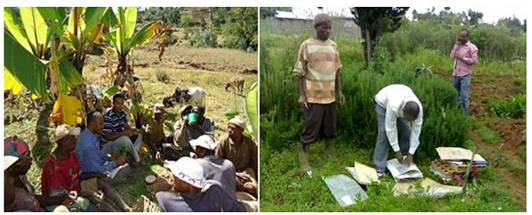Volume 2, Issue 1
Medicinal Plants Biodiversity and Local Healthcare Management System in Chencha District; Gamo Gofa, Ethiopia
Author(s): Mohammed Adefa Seid*, Seyoum Getaneh Aydagnehum
Arba Minch University, College of Natural Sciences, Department of Biology, P.O. Box 21, Arba Minch, Ethiopia
[E-mail: antemoha2008@yahoo.com]
Abstract: Since the time of immemorial, plants were used for multiple socio-cultural and economic uses. Medicinal use is one of the services that plants provide for human welfare. The practice of traditional medicine is common in Ethiopia although it is not utterly studies and documented. So, the aim of this study is to conduct an ethnobotanical survey of medicinal plants used for treatment of human and livestock health problems in Chencha district. For that reason, a cross sectional study and systematic sampling technique was employed to select possible sampling sites and medicinal practitioners. A total of 9 sampling sites were selected, and a total of 17 informants were selected and interviewed. Ethnobotanical data was gathered using semi-structured interview, group discussion and field observation, and analyzed using descriptive statistics, Pearson correlation coefficient, informants’ consensus and fidelity level index. A total of 89 medicinal plant species, used to treat human and livestock health problems, are discovered. Of these, nearly 42 species (47%) are harvested from only ex-situ while 19 species (21%) are harvested from in-situ, and the rest 28 species (32%) are gathered from both in-situ and ex-situ. On the other hand, about 64 species (72%) are found to be herbs, 16 species (18%) shrubs, 8 species (9%) trees and 1 succulent species. With regards to plant parts, leaves share the largest proportion with 44% followed by roots with 16%. Amongst several remedies, concoction forms account for 30% followed by infusion (21%). The majority of plant remedies (67%) are found to be administered via oral, followed by dermal (25%) and nasal (8%). On the other hand, the average informants’ consensus factor calculated (µICF=0.64) shows the presence of high intra-cultural uniformity amongst practitioners in using plants for multiple purposes. However, Pearson correlation coefficient analysis (r= -950, p=0.05) depicts the existence of significant and inverse correlation between age range and medicinal plant knowledge amongst informants.
Related Graphics:

Download Full Article : Click Here
